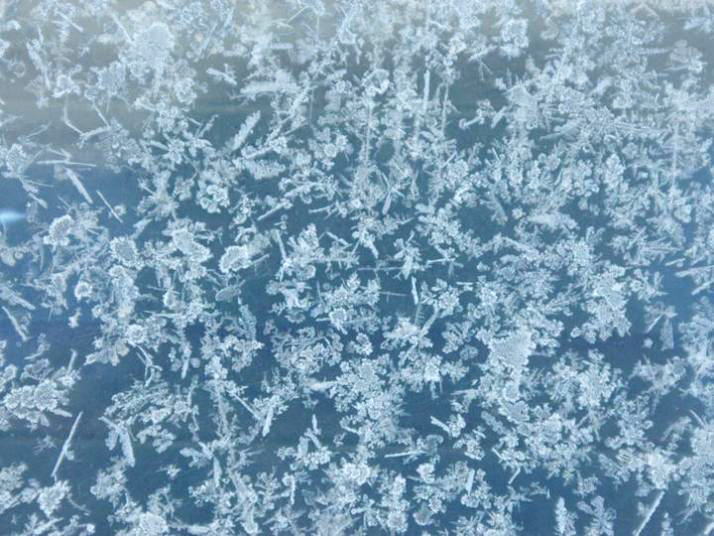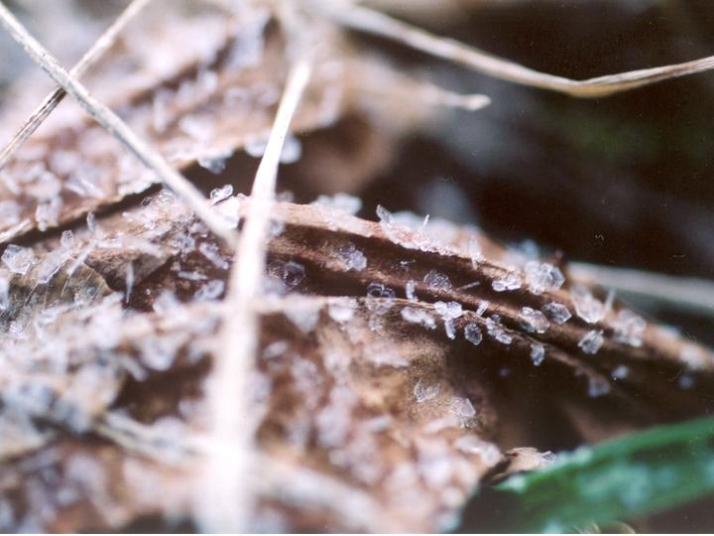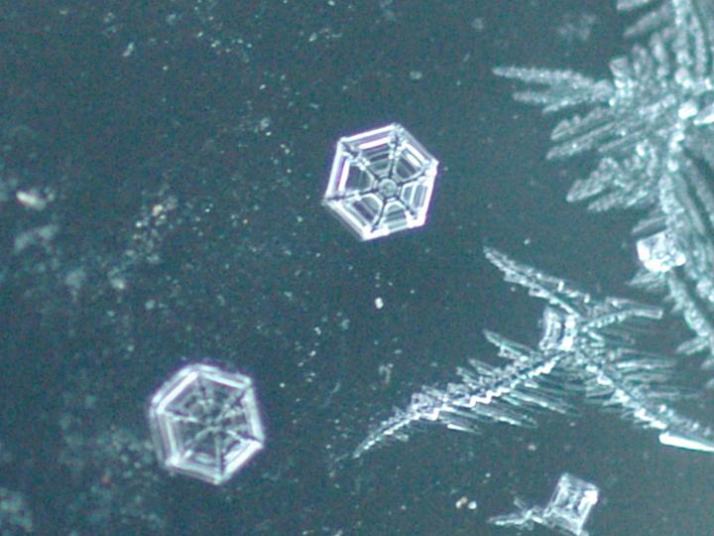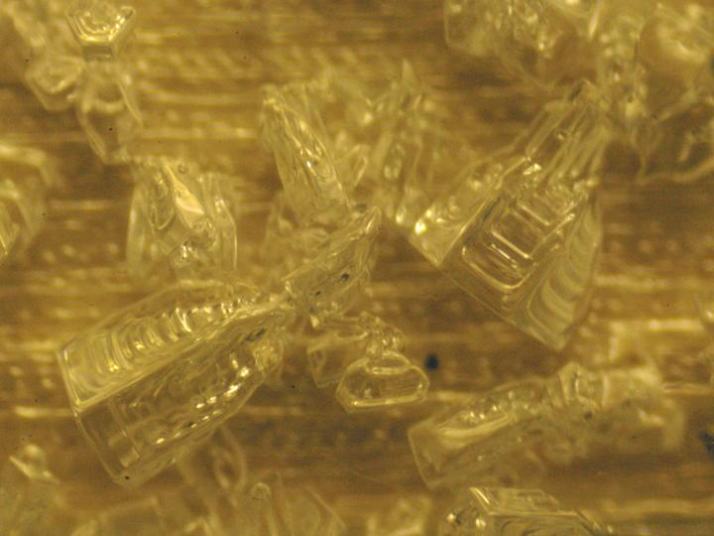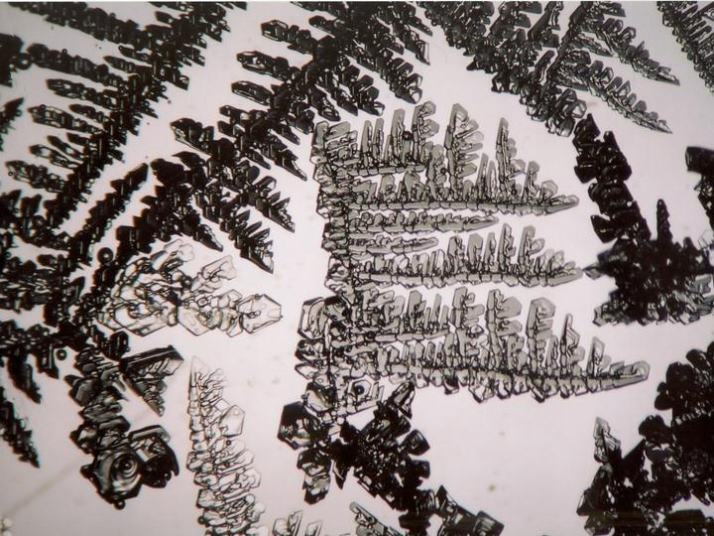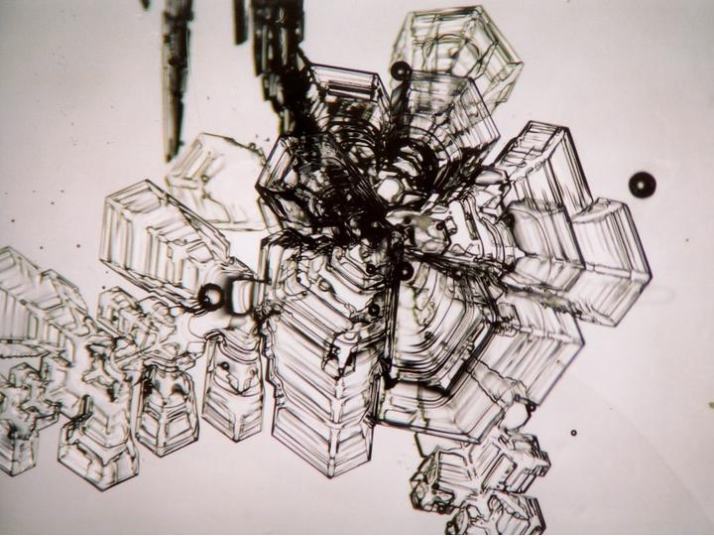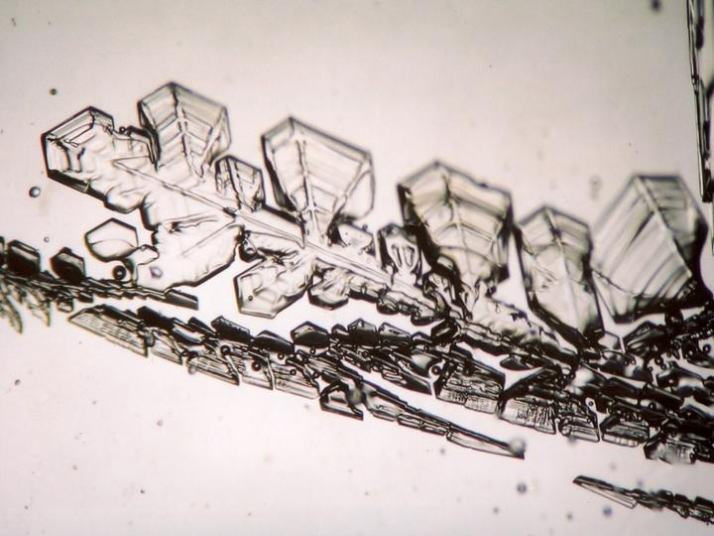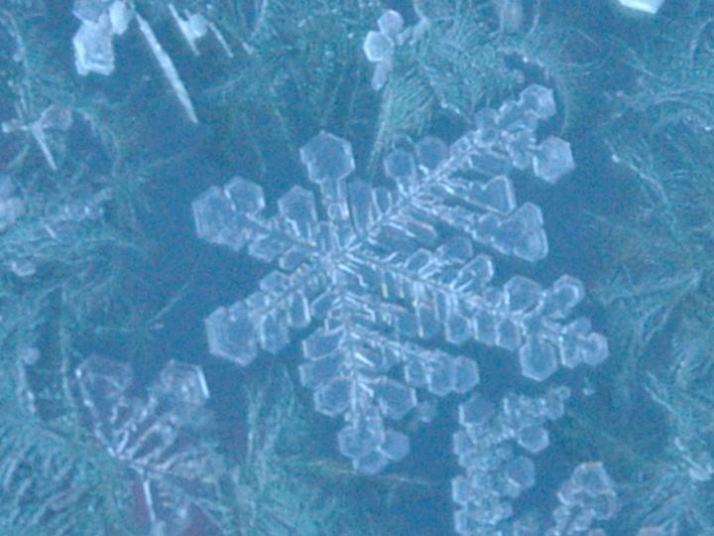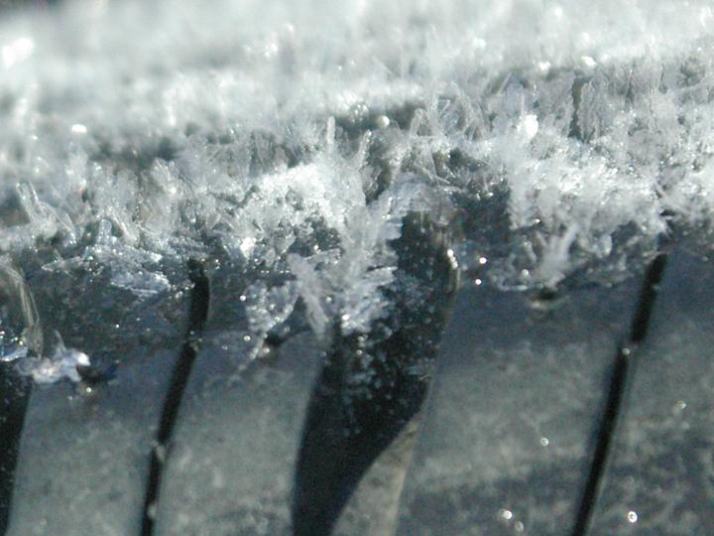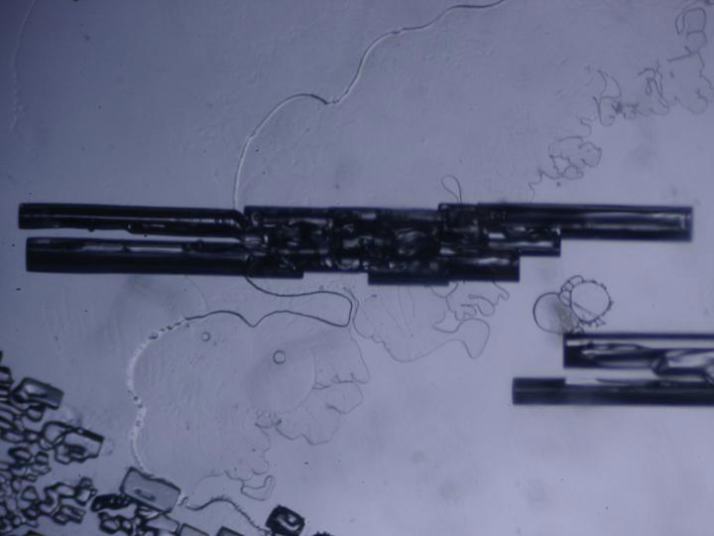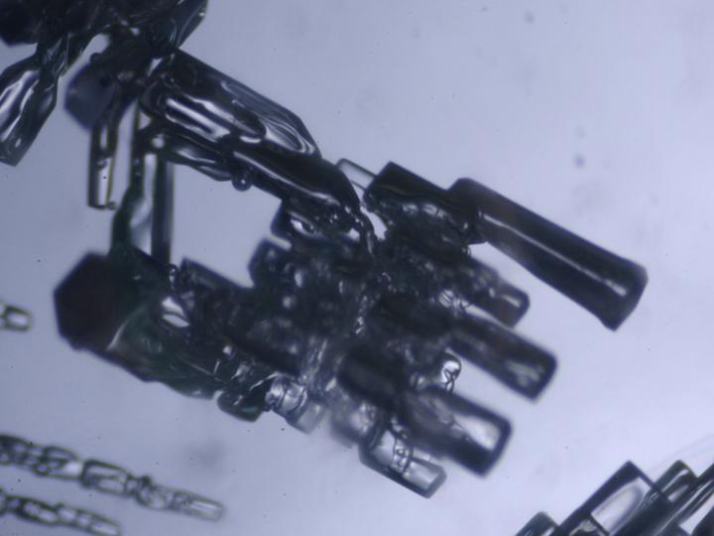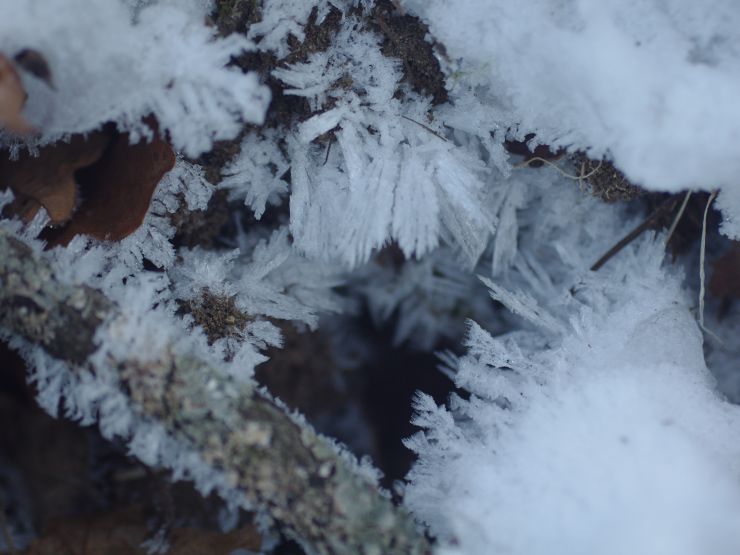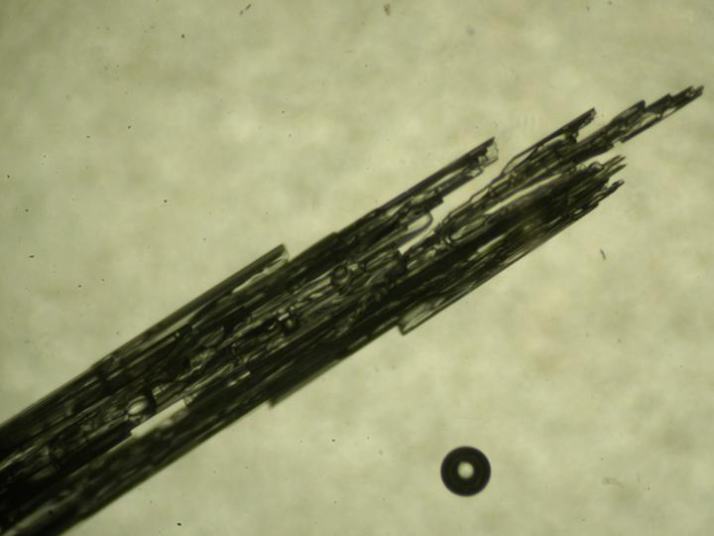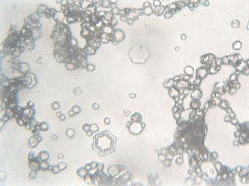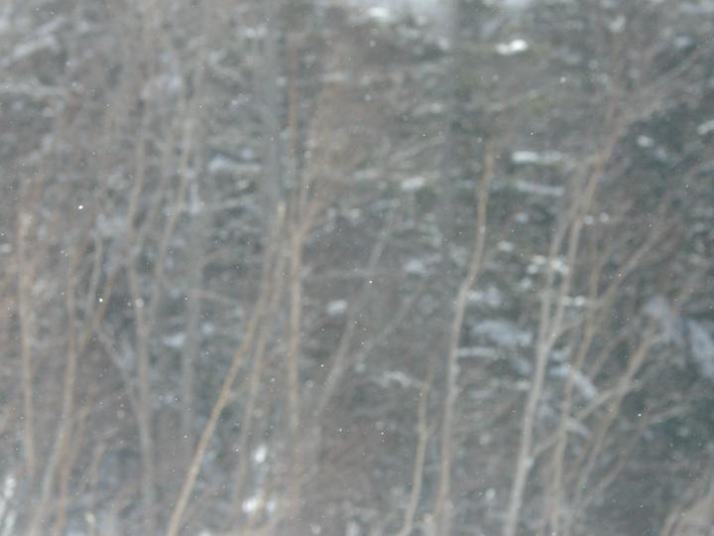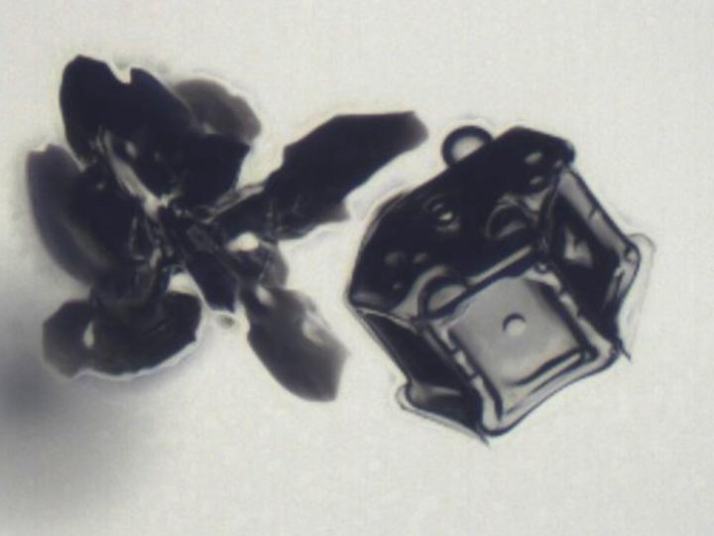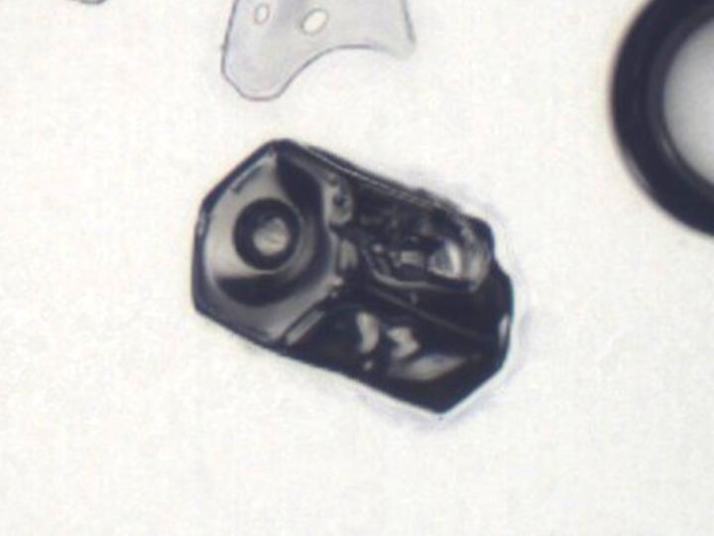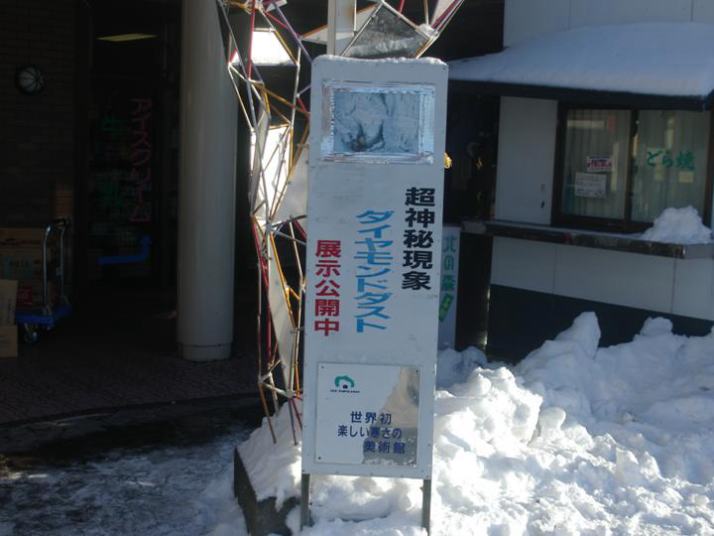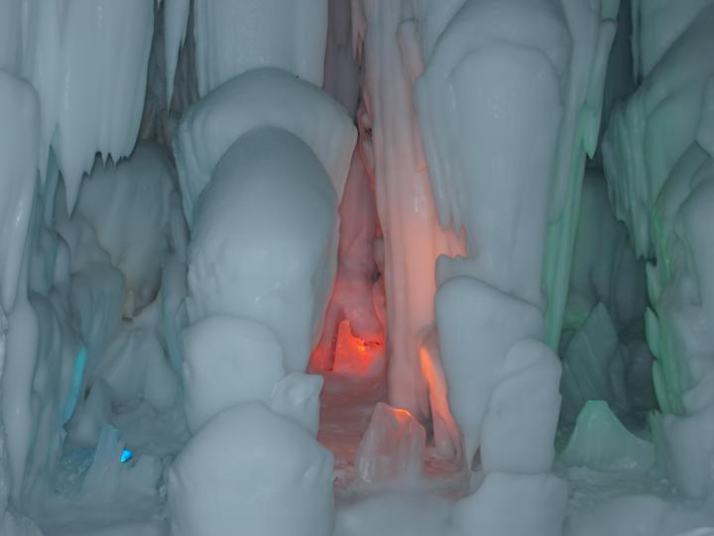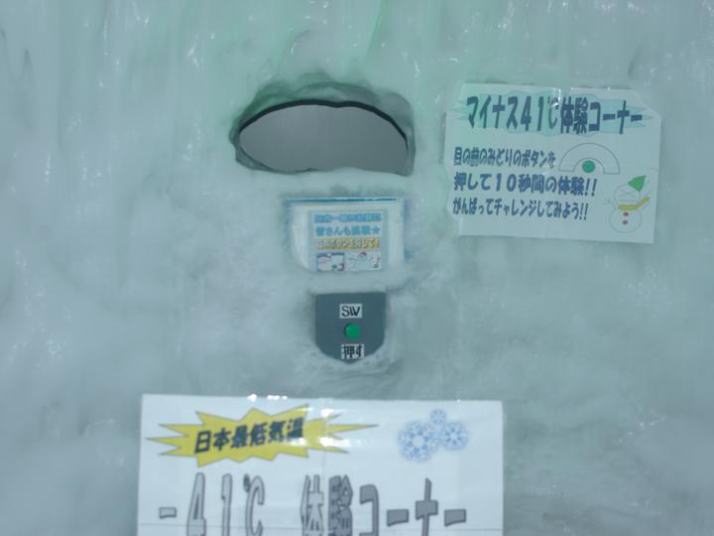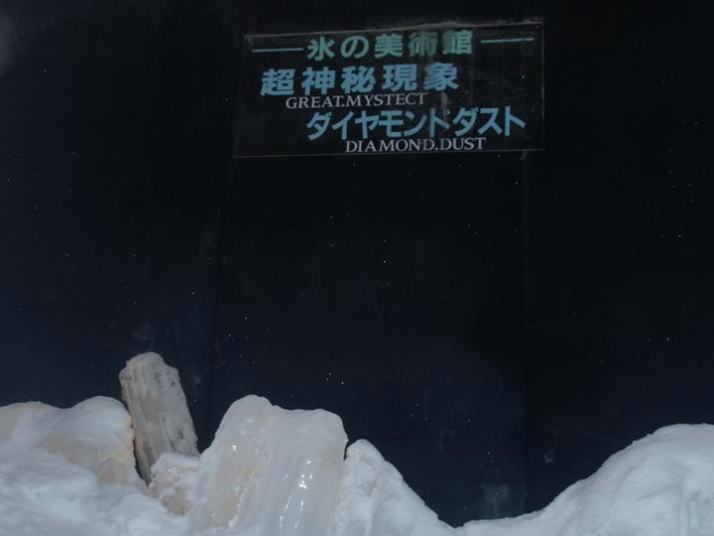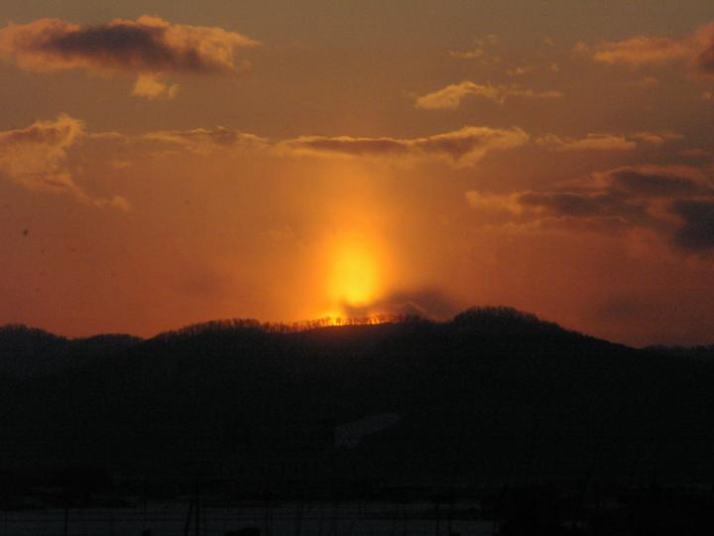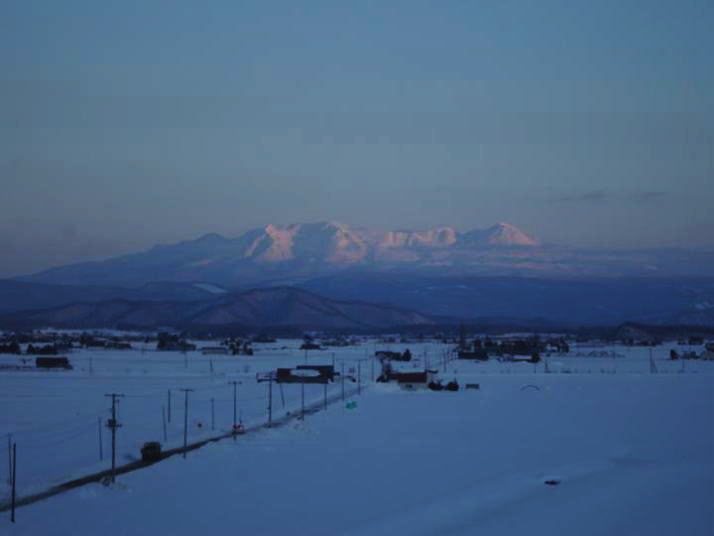Frost and Diamond Dust
Frost crystals
Like snow crystals, frost crystals are formed when water vapor in the atmosphere condenses. When they are magnified under a microscope, I can observe ice crystals as finely detailed as snow crystals. In Hokkaido, on severely cold mornings, large, growing frost can be found everywhere on the surfaces of outdoor objects, including not only the windows of houses, but also car bodies, house walls, and even individual plants and trees in the garden.
However, cold mornings when the temperature drops to about −15°C do not always result in a frosty landscape. There are mornings when there is no frost at all, depending on the day, even if the temperature is low about −15°C. On such days, it will be a morning that is simply severely cold. Whether or not frost grows large seems to depend on whether there is more or less water vapor in the atmosphere, just like snow crystals.
On the other hand, on mornings when large frost growths are everywhere and the entire frosty landscape is spread out, these frosted areas reflect the light of the morning sun and shine all at once. At this time, grass, trees, houses, cars, and everything else in the open air can be seen shining as if they were decorated with glasswork. The view is so beautiful that it's worth the cold morning.
Dr. Nakaya also observed frost crystals in between his observations of snow crystals. Based on their appearances, he stated that five types of frost crystals can be seen: "needle crystal", "featherlike crystal", "plate crystal", "cup crystal", and "dendritic crystal" 1).
He described that the "needle crystal" and "featherlike crystal" of frost are both made up of small hexagonal prisms, similar to columnar crystals of snow, "plate crystal" and "dendritic crystal" of frost have the same structure as plate crystal and dendrite crystals of snow, respectively, and the "cup crystal" of frost is shaped like a wine cup, and most often only forms part of it. Therefore, a diagram of the characteristics of each frost crystal would look like the image below. Unlike snow crystals, frost crystals that grow while attached to something do not seem to have a well-formed hexagonal symmetrical shape.
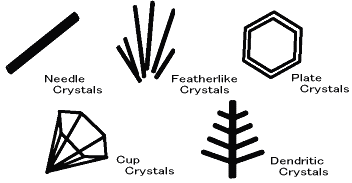
Since it is difficult to observe frost growing on a leaf or a car window directly with a microscope, I let the frost crystals grow on a transparent acrylic plate, made a replica of them, and observed it. Frost crystals observed in this way are shown below.
In some cases, I found frost crystals that had grown similar to snow crystals. But in most cases, I found that only a portion of the crystalline shape seen in snow had grown to a large size.
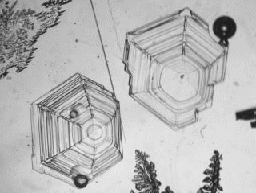
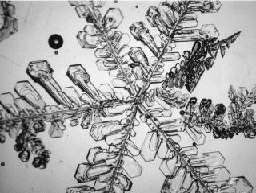
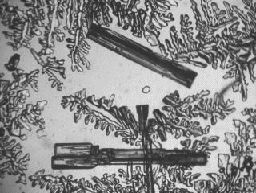
Frost of "plane crystals", "dendritic crystals", and "columnar crystals" (photographs of replica)
The photographs above, from left to right, correspond to the "plate crystal", "dendritic crystal", and "needle crystal" forms of frost described by Dr. Nakaya, respectively. These are all chosen to be similar in shape to snow crystals.
The photograph shown at the lower right is a skeleton-shaped crystal of frost. Simple crystals of this shape are rarely found in natural snow and are often combined with other crystal types (plate or columnar). However, experiments on artificial crystal growth have shown that crystals grow into this shape when there is a certain amount of water vapor in the air.
Snow crystals grow into simple shapes such as plate or columnar when the amount of water vapor in the air is low, and into complex shapes such as dendritic or needles when the amount is high 2). The skeleton-shaped crystal shown in the photograph on the lower right is the shape that grows when the amount of water vapor is in between the two conditions described above.
In the case of snow crystals, crystals are formed while drifting in the air, and as they fall, they go through air with various conditions (mainly temperature and water vapor concentration). Thus, snow crystals take on a complex shape, which is referred to as "does not have a thing of form same for two".
In contrast, frost crystals grow while attached to some object in stable air near the ground (where temperature and water vapor content do not change rapidly). For this reason, frost crystals seem to grow slowly into large crystals under stable conditions, although they rarely take the complex and elaborate form of snow crystals.
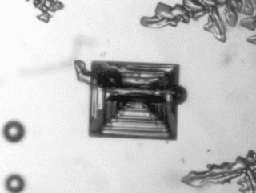
The frost of the skeleton structure
(photograph of replica)
Some types of frosts
Frost crystals develop on the transparent acrylic board (photographs of replica). The part that a crystal extends to the air is similar to the snow crystal.
Featherlike frost crystals (left) and its replica (right)
Diamond dust
On mornings when temperatures cool down to −15°C, one of the weather phenomena that adds color to the winter landscape as well as frost is "diamond dust". When the temperature drops significantly during the night and the cold mornings arrive, there is usually a radiative cooling phenomenon taking place. Therefore, on mornings when diamond dust can be seen, there is often a spectacularly clear blue sky.
Against such blue skies and white snowy landscapes, the air can sometimes appear to sparkle in the morning sun. This indicates that diamond dust is occurring.
Diamond dust is formed in the same way as snow crystals, as ice crystals form in the atmosphere due to condensation of water vapor. The ice crystals that I can see as diamond dust are so small that they do not fall rapidly and drift in the air. I wanted to see what these tiny ice crystals looked like.
For diamond dust artificially generated by dry ice or freezer, there is a technique to make a replica and observe it under a microscope 3). Therefore, I attempted to confirm the appearance of the small ice crystals by making replicas of them in the field.
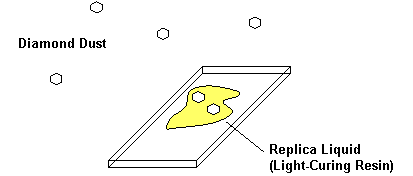
Specifically, glass slides coated with replica solution (light curing resin) were placed in the fields in the presence of diamond dust, and the replicas of ice crystals adhering to them were prepared. In this method, not only diamond dust but also snow particles blown from the snow surface adhere to the replica solution, and these replicas are obtained.
Therefore, observation of the replicas revealed small ice crystals of various shapes. Among them, I identified the hexagonally symmetrical crystals as diamond dust that just occurred in the air. The ice crystals so identified are shown in the following photographs. I was able to recognize the appearance.
The crystal of diamond dust (replica). These photographs are all focuses image.
The Diamond dust in the Ice Pavilion
References
1) 中谷宇吉郎,1994:雪.岩波書店,181pp.
2) Kobayashi, T., 1967: On the variation of ice crystal habit with temperature. Physics of snow and ice: Proceedings, 1(1), 95-104.
(http://hdl.handle.net/2115/20288)
3) 平松和彦,2002:ダイヤモンドダストの観察と簡単なレプリカ作成方法.日本気象学会春季大会講演予稿集,81,439.
